Carrie knows blood cancer from experience
The Leukaemia Foundation’s former Chair, Dr Carrie Hillyard, was “in the middle of absolutely nowhere” when she was struck with symptoms, then diagnosed with acute promyelocytic leukaemia – a rare form of AML.
“It was a pretty terrifying experience,” said Carrie, reliving the time she was in the north of Western Australia, working on a property 350kms of dirt road south of Kununurra in April 1999.
“I was doing a research and development audit, when I started to feel really ill,” said Carrie whose background is in biotech.
“And it was frustrating because I liked to fly aeroplanes at the time and I was offered the keys to a light aircraft to fly to see the Bungle Bungles but I felt so sick, I couldn’t even do it. My head was thumping.”
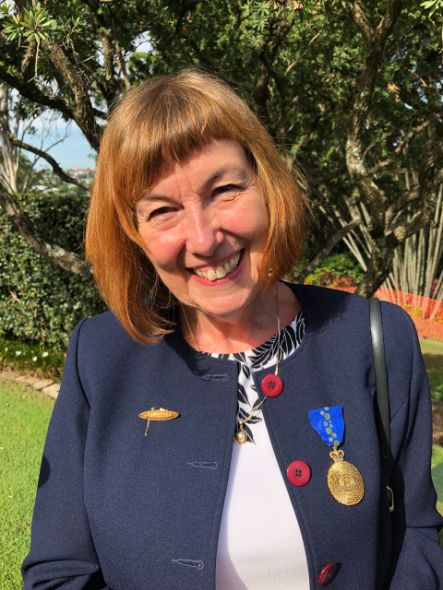
Carrie was diagnosed through the Flying Doctor phone service with possible dengue fever and told to go to Darwin. The GP she saw there said he didn’t know what was wrong and sent her to the hospital.
“They took some blood, then the doctor came back into the Emergency Department where I was waiting. He was shaking his head and said, ‘I’m going to have to admit you’.
“I said, you can’t do that, I’ve just checked into a hotel’, and he said ‘well, I’m checking you into my hotel’,” said Carrie with a laugh.
She was told she had ‘a serious haematological disorder’. It couldn’t be treated in Darwin, so she would have to go to Brisbane for treatment, which was lucky because that’s where she lived.
“My first reaction was, ‘oh no, I can’t do that’. I was due to go to Seattle with Peter Beattie’s Biotech Mission [Queensland’s then Premier] to a biotech conference on the following Sunday.
“Then she [the hospital doctor] said, ‘if you go, you’ll be dead before you can get back’!”
Carrie said the 4½-hour flight to Brisbane was “some of the worst time, not knowing what was going to happen”.
“You are left wondering and feeling awful, and that was really hard.”
It was late evening by the time Carrie arrived at the Brisbane hospital and the haematologist was there, waiting to do a bone marrow test.
She woke up the next day to the result – a diagnosis of APML – and started chemotherapy immediately, along with having lots of other tests, and a port-a-cath was surgically inserted.
Some years before this, when Carrie was researching blood cancers at the Royal Postgraduate Medical School (London), APML was, at that time, a death sentence. Virtually all the patients died – not of the leukaemia, but of disseminated intravascular coagulation* (DIC) – a series of blood clots in small blood vessels (not in the big veins like thrombosis).
“I was really lucky because HOCA** was doing a clinical trial at the time for ATRA all-trans retinoic acid] with idarubicin. ATRA was a relatively new drug at that point,” said Carrie, then aged 50.
“I still had to pay for the drug, but at least I got onto the trial, and it’s that drug that made all the difference because it prevented the DIC,” said Carrie.
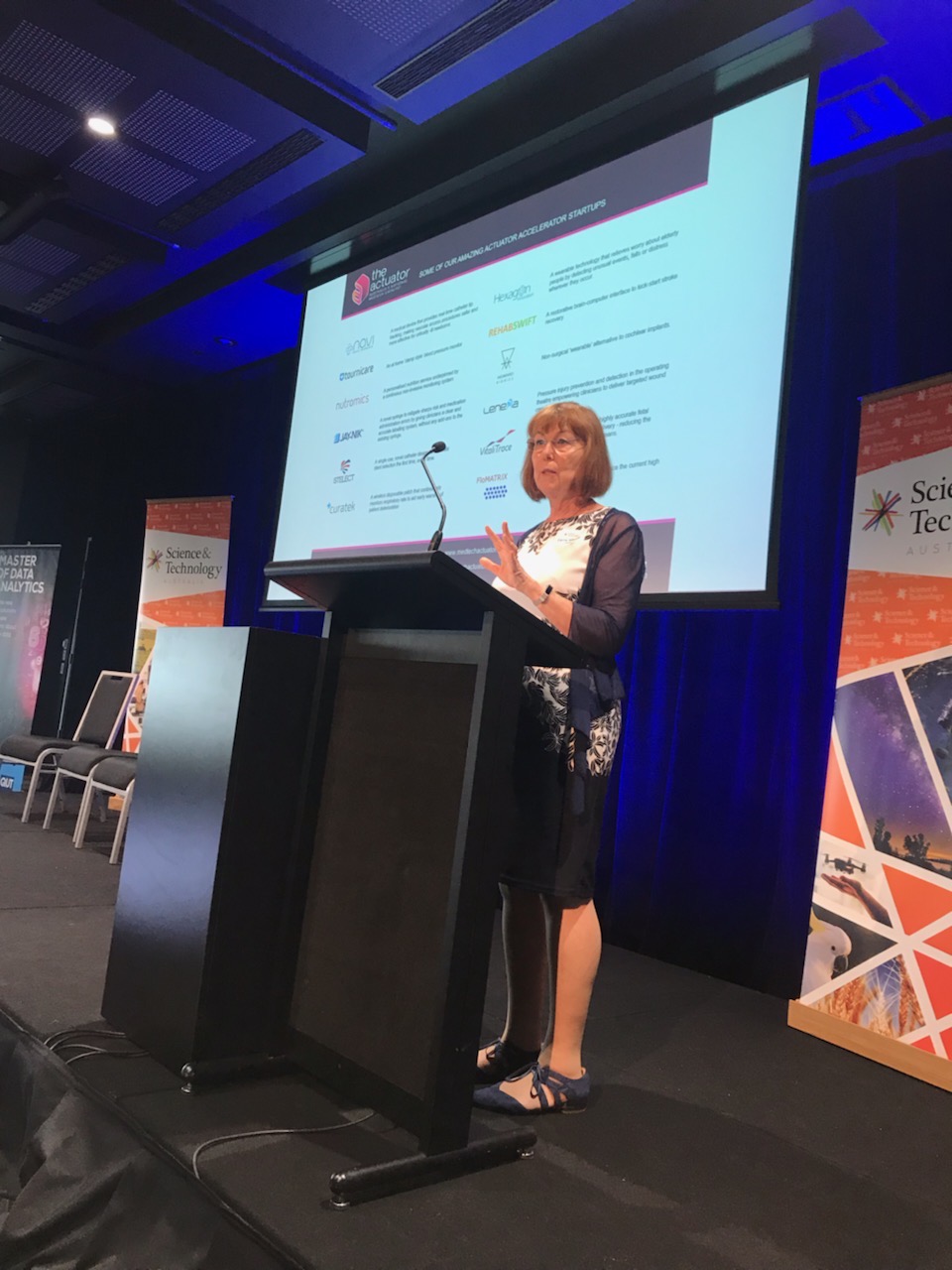
Working in the ward
On the trial, her hair fell out, she was neutropenic and spent many weeks in hospital… none of which stopped Carrie from continuing to work.
Those were the early days of the venture capital industry in Australia, and Carrie and her business partner had started one of the first venture capital companies.
“We’d raised the money and were looking at making some of our first investments, in early-1999, but I was still doing a bit of consultancy work, which is why I had been in Western Australia.
“Much of my consulting business was helping people commercialise their research.”
After seeing Carrie using the hospital telephone for dial up access to email and working on documents, the nurses found a desk which they moved into her hospital room. She even interviewed somebody there for a job!
“He [the interviewee] had to gown up to come and see me – mask, apron, gloves, everything – because I was neutropenic, and yes, he got the job!
Exercise aided Carrie’s recovery
Having an exercise professional was “one of the things that made an enormous difference” to Carrie’s recovery.
“I got her to come in while I was really ill, to help me understand what I could and couldn’t do, and to try and keep moving and exercising.
“There was an exercise bike in the ward that I used. Some days I could only do five minutes, but I stuck at it and I actually think that keeping that exercise going made a big difference.”
After leaving hospital, Carrie was monitored with bone marrow biopsies, initially every month, then three-monthly and she carried on with her exercise program.
“Then I relapsed the following year,” said Carrie, recounting the time one of the doctors stood at the end of her bed and said, “not looking good Carrie – have you made a will?”
“They put me on some different chemotherapy and that seemed to work. Some of the time I was walking around with a little pump, at home, rather than being in hospital.
“Again, I kept the exercise up when I could. I tried to keep busy and I was working as well,” said Carrie.
She went into remission again and this is when the decision was made to harvest Carrie’s own stem cells to be stored, in case she needed an autologous stem transplant as further treatment.
She had migrated from the United Kingdom in early-1986 and her immediate family, in England, had their bone marrow tested, but she didn’t have a sibling match.
“My sister and brother turned out to match each other but not me.”
For Carrie, the procedure of having her stem cells collected was “a terrible experience”.
“I had severe bone pain with the stem cell preparation, then had an allergic reaction to the anti-coagulant and had to be sedated during the collection,” she explained.
Carrie continued to be monitored, initially every three months, then over increasingly longer periods, with biopsies and a genetic test to see if the leukaemia was coming back… and it never did.
“After about five years, they stopped doing them,” said Carrie.
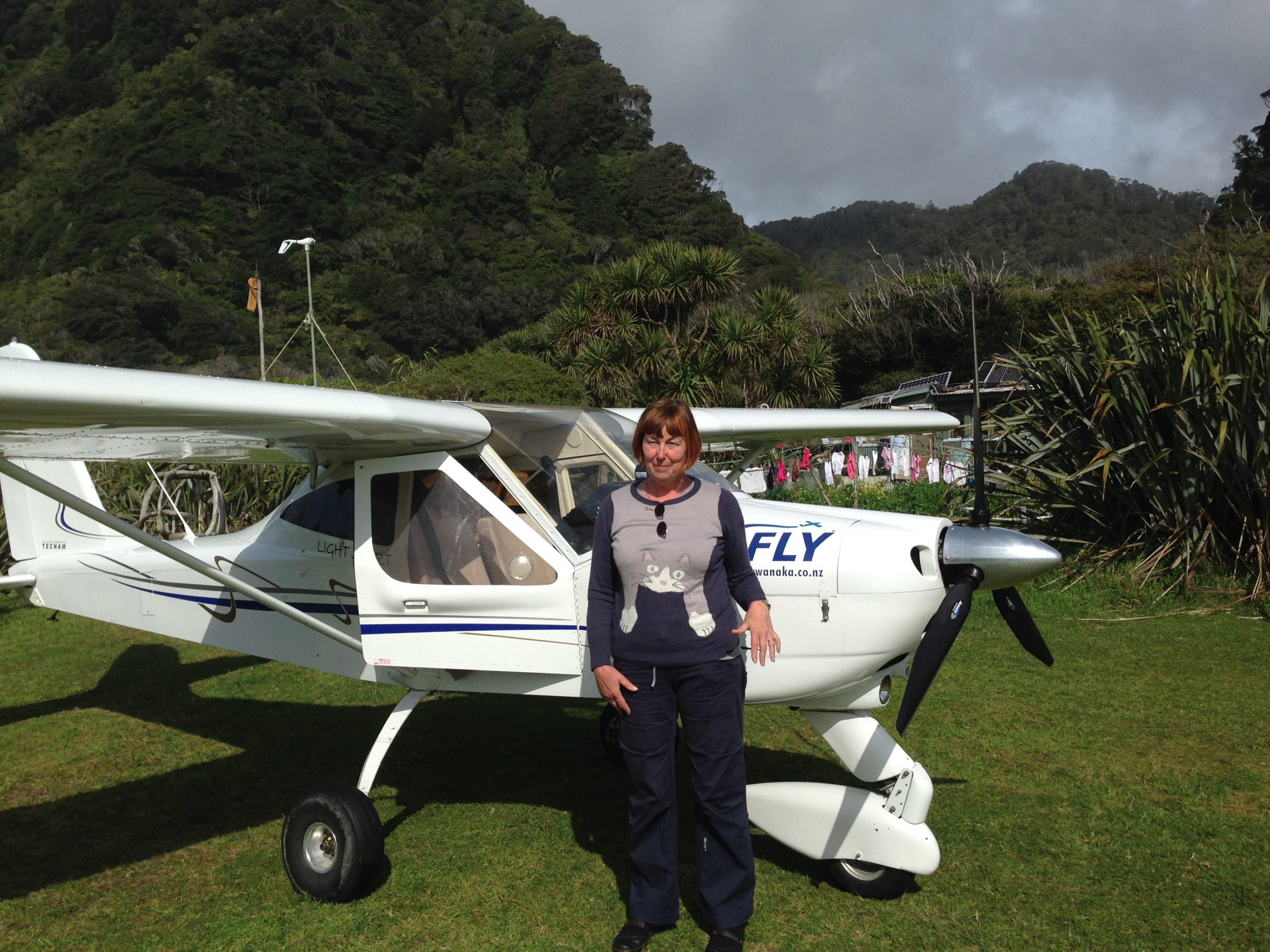
Treatment after effects
Carrie had “terrible fatigue” as a result of having chemotherapy.
“It was a real effort to get out of bed and I had to force myself to exercise and to do all the things I needed to do.
“My GP sent me to several specialists, including a psychiatrist, to no avail.”
This changed after Carrie had a genetic test, not whole genome testing but single nucleotide polymorphism (SNP) “that looks at some of the genes that you can up and down regulate with diet, exercise and simple supplements”.
“I was chairing the company [Fitgenes] and I wanted to find out what the test would do,” she said, and her test results were revealing.
“I realised that I had a problem with inflammation, I had all these gene variations that were in the inflammation cascade.
“I spoke to my GP and got a referral to a dietitian to put me on an anti-inflammatory diet and I can’t believe the difference it made. The fatigue I’d had for 15 years went away over six months.”
Carrie also lost a lot of weight, felt better, and had “all this energy”.
In May 2016, after training for six months, running up and down the stairs near Brisbane’s Story Bridge, she went on a fundraising adventure, walking the Great Wall of China.
“After that I was at the peak of my fitness,” said Carrie.
Carrie’s advice for others
“There are lots of things you can do to shore up your resilience to disease. It’s important that people who have had blood cancer/leukaemia keep an eye on their diet and exercise, because they’re a bit more vulnerable,” she suggested.
“Inflammation is one of the drivers for a lot of diseases, including cancers, so if you can keep that down, you can keep yourself healthier, and being low in vitamin D doesn’t help; it’s been associated with cancers as well.
“I cook mainly by steaming or poaching in coconut milk, I’ve cut cheese down dramatically, and I’m careful with things like smoked meats and fish.
“I don’t cut them out completely, because that would just be too horrible, but I cut them right down,” said Carrie.
“I think being positive and looking for the light at the end of the tunnel is important. And keeping busy. For me, it was keeping my mind occupied with things other than worrying about my health.
“But I wish I’d known more about the Leukaemia Foundation at that time because I had no idea of the level of support services that were provided. It would have made an enormous difference, to speak to somebody.
 Carrie’s professional background
Carrie’s professional background
Carrie has a joint degree in biochemistry and biology, a doctorate in the faculty of medicine and was a medical researcher in her early career in England, working initially in calcium metabolism which then led to an interest in cancers.
Having spent two sabbaticals in Australia and falling in love with the country, she decided to emigrate. She was head-hunted initially as a senior scientist and quickly promoted to research and development director of a biotech company in Brisbane.
Since 2007, Carrie has been on the Mater Research Board. She is also on the boards of two small companies and the Academy of Technology and Engineering (ATSE) and she reviews grants as a member of the Australian government’s Entrepreneurs’ Programme Committee.
“I work with start-up companies as well and do a lot of mentoring, particularly of young women who are aspiring scientists.
“Recently, a colleague said the Leukaemia Foundation was looking for a Board member. I was interested because of my past – both my research and experience – and I have a lot respect for the Foundation and what it does.”
Describing her role, from October 2019 – April 2021, as a Director and then Chair of the Leukaemia Foundation’s Board of Directors, she says “we’ve got a lot to do” and this has been amplified by the COVID-19 crisis.
“The coronavirus has changed everything. The Board is looking at resilience, managing risk and how we can support the organisation through this time. Our first priorities are to keeping our teams and people living with blood cancer safe.
“The other major thing at the moment is supporting the Blood Cancer Taskforce and the National Action Plan for Blood Cancer.
“It’s also important to look to the future and make sure the Leukaemia Foundation is positioned for the best possible outcomes at the end of this virus emergency.
“It is very likely that there will be a backlog of patients who waited to see their doctors, with a consequent upsurge in the number of new blood cancer diagnoses when things get back to normal. We need to be prepared for that.
“Once there’s a vaccine or an effective treatment, people will be able to go back to normal life. We need to be there for them and to be the organisation people still want to support with donations and fundraising activities.
“I’ve always been positive. I’m a glass half full person. I wouldn’t have survived the leukaemia as well as I did if I hadn’t been able to look at the light at the end of the tunnel, rather than the tunnel itself.
Carrie lives on Tamborine Mountain, about an hour south-west of Brisbane, and shares an apartment near Brisbane’s CBD, when working, and these days, to exercise, she walks and does gym work.
“I’m a bushwalker – I like getting into the bush. It’s wonderful – it lifts the spirit.”
*Disseminated intravascular coagulation is a condition in which small blood clots develop throughout the bloodstream, blocking small blood vessels. The increased clotting depletes the platelets and clotting factors needed to control bleeding, causing excessive bleeding
**Now known as ICON Cancer Centre.
Last updated on February 15th, 2022
Developed by the Leukaemia Foundation in consultation with people living with a blood cancer, Leukaemia Foundation support staff, haematology nursing staff and/or Australian clinical haematologists. This content is provided for information purposes only and we urge you to always seek advice from a registered health care professional for diagnosis, treatment and answers to your medical questions, including the suitability of a particular therapy, service, product or treatment in your circumstances. The Leukaemia Foundation shall not bear any liability for any person relying on the materials contained on this website.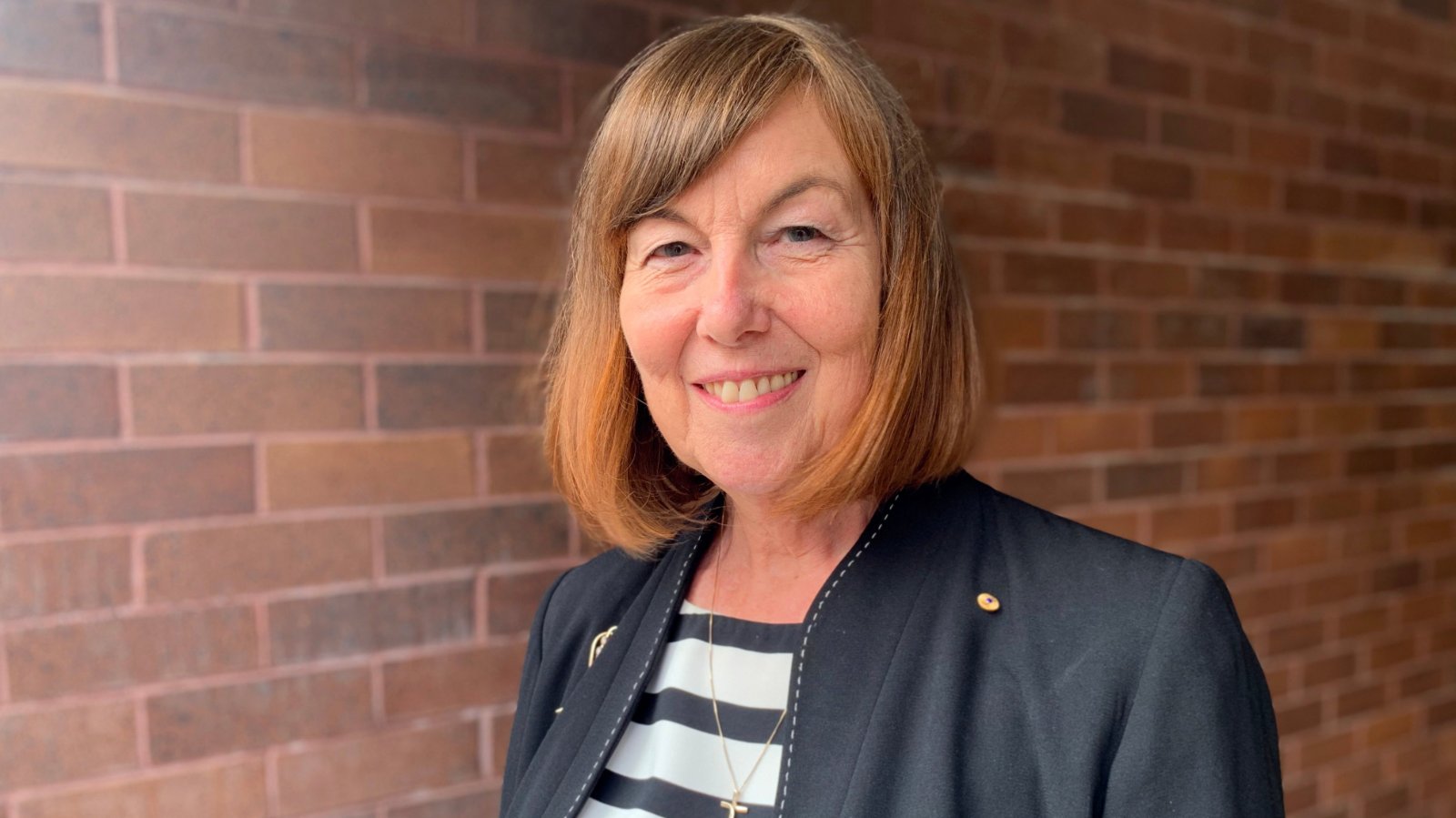
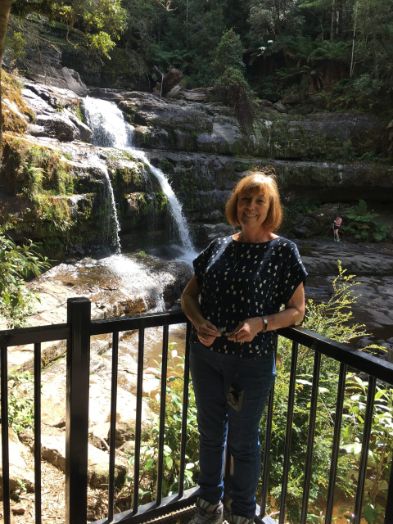 Carrie’s professional background
Carrie’s professional background